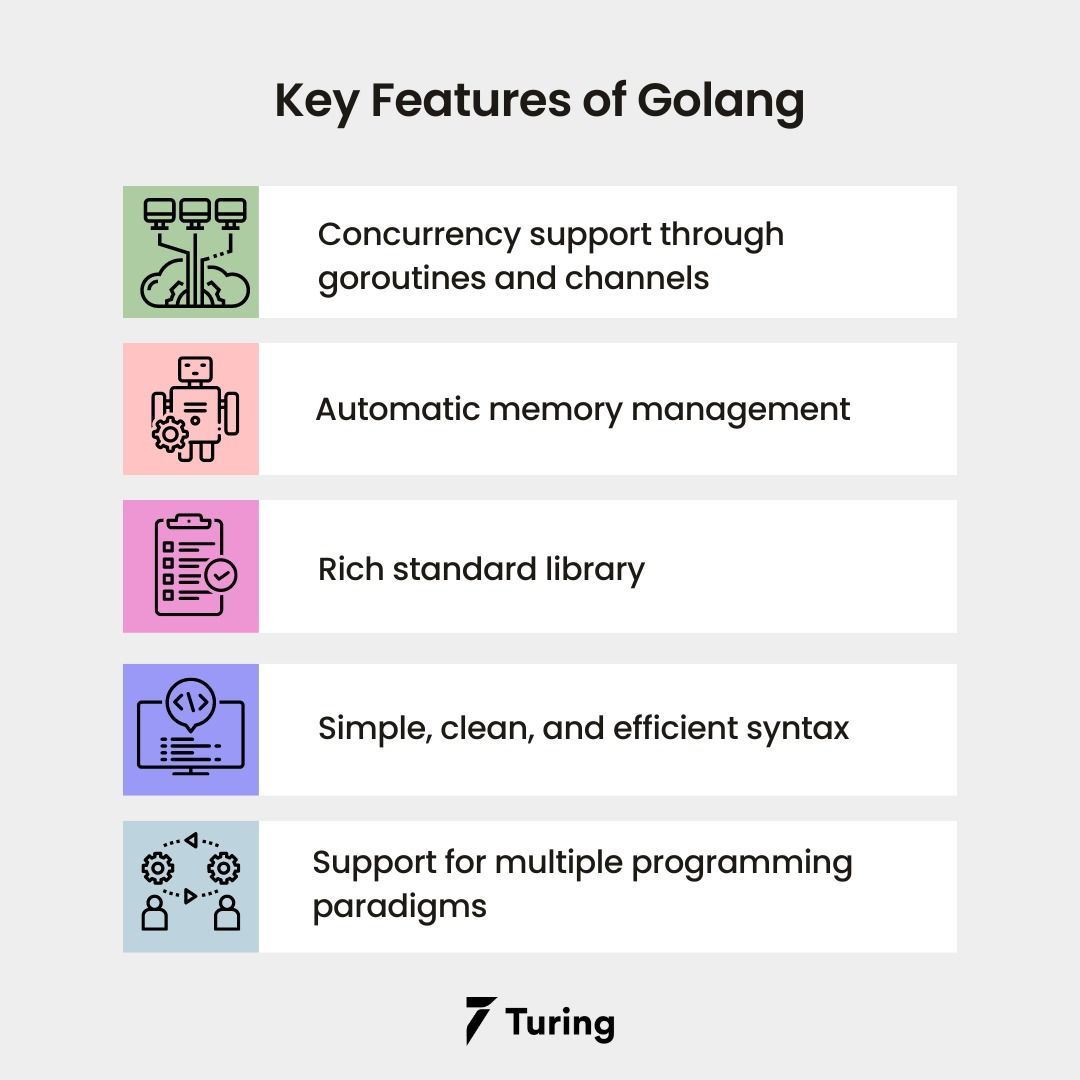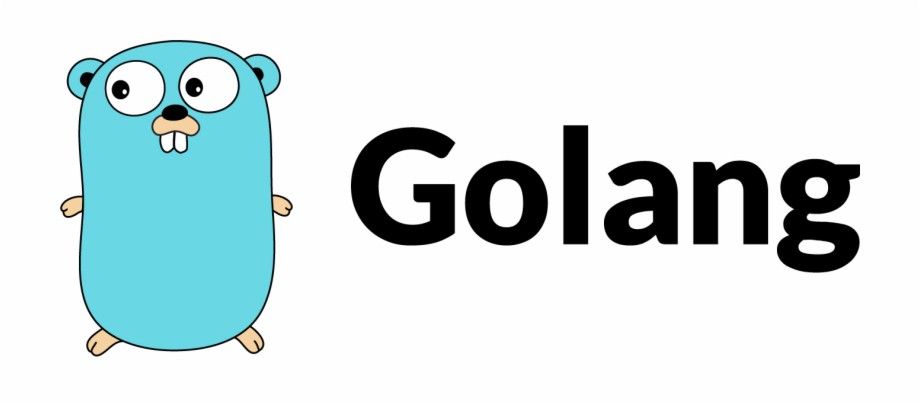Introduction
Go, also known as Golang, is an open-source programming language designed for simplicity, efficiency, and reliable software development. Created at Google by Robert Griesemer, Rob Pike, and Ken Thompson, Go has quickly gained popularity among developers due to its innovative features and ease of use. This article provides a comprehensive overview of Go language, its history, its unique features, and its thriving ecosystem.
Origins
Go was conceived in 2007 by Robert Griesemer, Rob Pike, and Ken Thompson at Google as they sought to address some of the challenges faced by developers when working with large-scale systems, such as long build times and difficulties in managing dependencies. Go was publicly announced in 2009, and its first stable version, Go 1.0, was released in 2012.
Google created Go to address the limitations of existing programming languages like Java, C++, and Python, which were not designed with today's highly concurrent, networked, and distributed systems in mind. Go was designed to provide better support for modern hardware, improve developer productivity, and ensure reliable and efficient software development.
Comparison with another Programming Languages
Go was designed to overcome some of the shortcomings of older programming languages. For instance, Go offers faster compilation times compared to Java and C++, and it has a simpler syntax and better concurrency support than languages like PHP. Go's simplicity and efficiency make it an attractive choice for developers building modern software systems.
| Feature | Go | Java | PHP |
|---|---|---|---|
| Concurrency | Strong support with goroutines and channels | Supports threads and thread synchronization | Not designed for concurrency, but some libraries provide limited support |
| Memory Management | Efficient memory management with garbage collection | Garbage collection, but may have larger memory footprint | Garbage collection, but can have memory leaks and performance issues |
| Compilation Speed | Fast compilation times | Slower compilation times compared to Go | Interpreted language, slower than compiled languages |
| Static Typing | Yes | Yes | No, dynamically typed |
| Syntax | Simple, minimalistic, and easy to read | Verbose compared to Go | Less consistent and more complex than Go |
| Cloud-Native and DevOps | Designed for cloud-native era, used in many DevOps tools | Used in some cloud-native tools, but not specifically designed for it | Less suitable for cloud-native and DevOps tools compared to Go |
Killer Features

Simplicity and readability
Go prioritizes simplicity and readability in its syntax, making it easier for developers to write, read, and maintain code. For example, Go uses a minimalistic syntax with no semicolons or parentheses, and it relies on a strict formatting style enforced by the gofmt tool.
Concurrency support
Concurrency is a key feature of Go, enabling developers to easily build high-performance, scalable applications. Go's lightweight goroutines and channels allow developers to manage concurrent tasks with ease.
Efficient memory management
Go has a garbage collector that automatically manages memory allocation and deallocation, reducing the risk of memory leaks and making it easier for developers to focus on writing code. Additionally, Go's value-based type system and efficient use of memory allow for better performance and lower memory overhead compared to some other programming languages.
Static typing and garbage collection
Go is a statically typed language, which means that the type of a variable is known at compile time. This feature helps catch potential errors before runtime and improves the overall performance of the code. Go also incorporates garbage collection, which simplifies memory management and reduces the likelihood of memory leaks.
Fast compilation times
Go boasts fast compilation times, making it an attractive option for developers who value quick feedback loops. The fast compilation speeds can be attributed to Go's simple dependency management system and the way it compiles code directly to machine code, eliminating the need for a virtual machine.
Designed for the cloud-native era
Go was born in the era of cloud computing, and its features make it an ideal language for building cloud-native applications. Go's lightweight concurrency model, efficient memory management, and fast startup times enable developers to build scalable, high-performance microservices and distributed systems.
Ecosystem
Community and Users
Go community is thriving, with developers and enthusiasts collaborating through various online forums, such as the Golang subreddit and the Golang Google Group. There are also regular conferences and meetups worldwide, like GopherCon, GoLab, and local Go meetups, where developers can share their knowledge and experiences.
Both startups and large enterprises have embraced Go for various applications. Startups appreciate Go's simplicity, speed, and ease of deployment, while large enterprises benefit from its robustness and scalability. Companies like Google, Dropbox, and Docker have used Go to build critical components of their systems.
Libraries and packages
Go offers a rich ecosystem of libraries and packages that simplify the development process. The Go standard library includes essential packages for common tasks like networking, file handling, and data manipulation. Additionally, there are many third-party libraries available for tasks like web development, database connectivity, and authentication. Popular libraries include Gorilla for web development, or Cobra for CLI applications.
Development Tools
The Go ecosystem includes a variety of tools and IDEs to support developers in their workflows. The official Go distribution includes essential tools like the Go compiler, the go command for managing dependencies and building projects, and the gofmt tool for enforcing consistent code formatting. Additionally, there are several popular IDEs and text editors that support Go development, such as Visual Studio Code, GoLand, and Vim with the appropriate plugins.
Showcases
Various companies have adopted Go as their primary technology or for specific components within their systems due to its performance, scalability, and simplicity. Some notable examples include:
- Google: As the creator of Go, Google uses the language extensively in its projects. Go powers critical components of Google's infrastructure, such as the backend for YouTube and Google Cloud Platform services like Kubernetes and Google App Engine. Google chose Go for its efficiency, scalability, and the ease of managing concurrent workloads.
- Dropbox: Dropbox, a cloud-based file hosting service, migrated significant portions of their backend from Python to Go. The company chose Go for its superior performance, better concurrency support, and efficient memory management. The switch to Go helped Dropbox improve server response times and reduce the number of servers needed to handle user requests.
- Docker: Docker, the company behind the popular containerization platform, uses Go for the core components of its technology stack. The Docker engine, responsible for creating and managing containers, is written in Go. The choice of Go was driven by its strong support for concurrent operations, fast startup times, and the language's ability to produce statically linked binaries, which simplified deployment and distribution.
- Uber: Uber, the ride-sharing and logistics company, has adopted Go for several of its critical systems, including its highest query per second (QPS) service. Go's concurrency model, fast performance, and efficient memory usage enable Uber to handle millions of requests per second while maintaining low latency and resource usage.
- Cloudflare: Cloudflare, a web performance and security company, uses Go to power several of its key services. Go's simplicity, performance, and strong support for concurrency make it an ideal choice for Cloudflare's edge computing platform, Workers, as well as their distributed systems such as the Railgun web content optimizer.
These companies have chosen Go as a primary technology or for specific use cases because of its unique advantages, such as high performance, simplicity, scalability, and excellent concurrency support. This allows them to build and maintain modern, efficient, and reliable systems that cater to the needs of their users.
Go: A Cloud-Native Language Powering DevOps Tools
Go's design principles and features make it an ideal language for the cloud-native era and a popular choice for building DevOps tools. As a cloud-native language, Go is well-suited for creating distributed systems, microservices, and containerized applications that are central to modern software development and deployment practices.
One of the main reasons Go is considered a cloud-native language is its strong support for concurrency. Go's lightweight goroutines and channels make it easy for developers to build high-performance, scalable applications that can handle numerous simultaneous tasks. This is particularly important in cloud-native environments, where systems often need to manage and process large volumes of network traffic and user requests.
Another factor that contributes to Go's cloud-native appeal is its efficient memory management and fast startup times. Cloud-native applications must often scale quickly to accommodate fluctuating workloads, and Go's garbage collector and value-based type system help ensure efficient memory usage. Go's fast compilation times and quick startup also make it an attractive choice for deploying containerized applications, which are a cornerstone of modern, cloud-based infrastructure.
Go's popularity in the DevOps world is evident in the vast number of tools and frameworks built using the language. Some of the most notable DevOps tools developed with Go include:
- Kubernetes: Kubernetes, an open-source container orchestration platform, is one of the most well-known Go-powered DevOps tools. Kubernetes enables developers to automate the deployment, scaling, and management of containerized applications. The choice of Go for Kubernetes was driven by its simplicity, performance, and strong support for concurrent operations.
- Docker: Docker, a platform for developing, shipping, and running applications in containers, uses Go for its core components. Go's ability to create statically linked binaries simplifies deployment and distribution, making it an ideal choice for building the Docker engine.
- Terraform: Terraform, an infrastructure-as-code (IaC) tool, is written in Go. Terraform allows developers to define and manage infrastructure resources using a declarative configuration language. Go's simplicity, performance, and cross-platform support make it a suitable choice for building a tool like Terraform.
- Prometheus: Prometheus, an open-source monitoring and alerting toolkit, is developed using Go. The choice of Go for Prometheus is due to its performance, efficient memory management, and concurrency support, which enable the monitoring system to handle a large volume of metrics and queries.
- etcd: etcd, a distributed key-value store, is another DevOps tool built with Go. It is designed to provide reliable, fast storage for critical data in distributed systems like Kubernetes. Go's simplicity and strong support for concurrency make it an excellent choice for building a tool like etcd.
About 8grams
We are a small DevOps Consulting Firm that has a mission to empower businesses with modern DevOps practices and technologies, enabling them to achieve digital transformation, improve efficiency, and drive growth.
Ready to transform your IT Operations and Software Development processes? Let's join forces and create innovative solutions that drive your business forward.
Subscribe to our newsletter for cutting-edge DevOps practices, tips, and insights delivered straight to your inbox!

